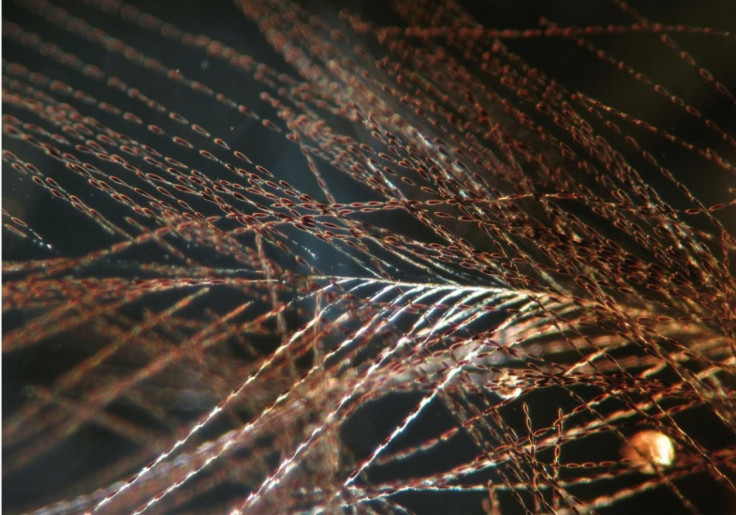80 Million Year Old Feathers Trapped in Amber Reveal Colorful Dinosaurs

Eighty-million year old feathers that have been preserved and fossilized in tree sap may finally give scientists a better glimpse of what dinosaurs looked like.
While the secrets of the dinosaur age have typically been revealed by fossilized bones, a University of Alberta research team in Western Canada has uncovered a myriad of feathers trapped in tree resin that turned into resilient amber, preserving the specimens that scientists believe may have come from non-avian dinosaurs from the late Cretaceous period.
All the feathers are preserved down to micron scale, showing indentations and pigmentation, study researcher Ryan McKellar, of the University of Alberta, told LiveScience. It's also the first time we've found proto-feathers [feathers thought to belong to non-avian dinosaurs] preserved in amber.
According to the study, published Thursday in the journal Science, McKellar, a paleontology graduate student, discovered the 11 preserved feathers among the massive amber collections at the Royal Tyrrell Museum in southern Alberta.
Researchers reportedly sanded down and polished the amber pieces millimeters away from the feathers, allowing them to get an up-close look at the trapped feathers. The process allowed them to see the pigments that once colored the feathers, many of which were dark gray or brown, while others were transparent.
Although no dinosaurs or avian fossils were found in direct association with the amber specimens, McKellar said that comparison between the amber and other fossilized feathers found in rock suggests some of the new specimens are from dinosaurs. In particular, non-avian dinosaur evidence suggests the feathers may have come from small theropods.
Some of the feathers are similar to those found on modern birds like the grebe, the researchers report. The findings also demonstrate that multiple evolutionary stages of feathers were present during the late Cretaceous period, McKellar said.
Until this point, dinosaurs have popularly been depicted with olive or gray-colored skin, which likely arose from their similarity with crocodiles, their closest living reptilian relatives, Mark A. Norell, a paleontologist at the American Museum of Natural History, told the New York Times.
© Copyright IBTimes 2024. All rights reserved.











